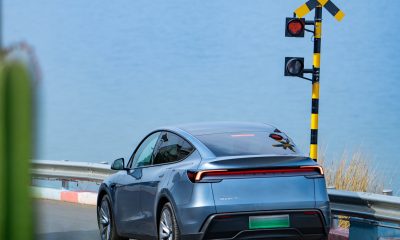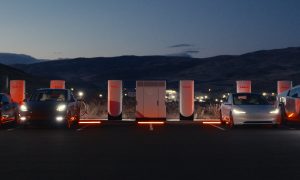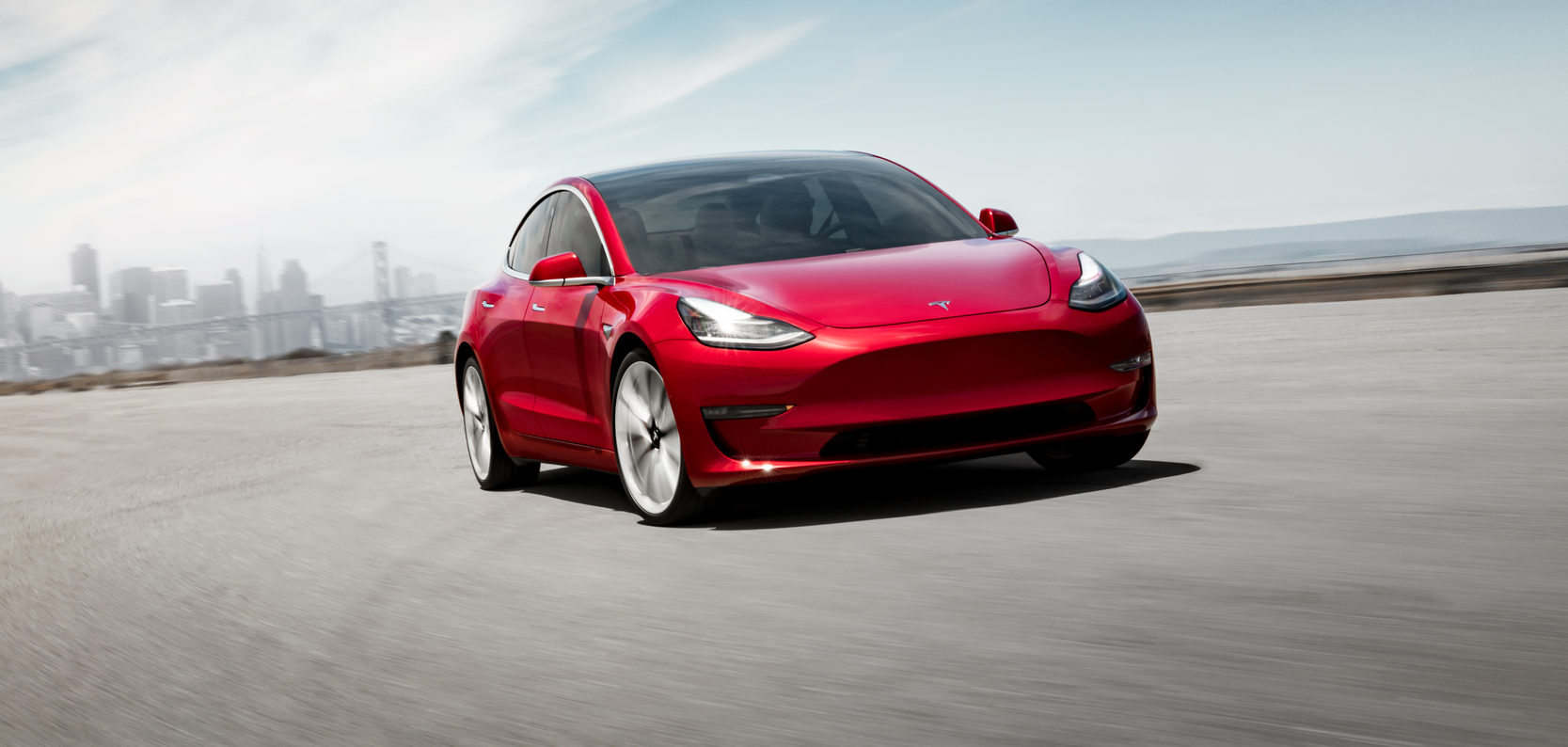

Investor's Corner
Tesla crushes short thesis on declining Model 3 demand
Tesla announced during its Q2 2018 earnings call that interest and demand for the Model 3 remains strong, particularly from customers who are not part of the company’s initial line of reservation holders. The update follows months of speculation that the rollout of the Model 3 has been anything but smooth. Since starting production of the electric car, Tesla has faced difficulty after difficulty, spurred by aggressive timelines announced by CEO Elon Musk and bottlenecks that emerged from its production lines. When the Model 3 was released, Elon Musk boldly declared that Tesla would aim to manufacture 5,000 of the vehicles per week by the end of 2017. That goal proved elusive until the end of Q2 2018, and only because Tesla adopted a “burst build” strategy.
While Tesla managed to hit its target of manufacturing 5,000 Model 3 per week at the end of Q2 2018, doubts from the company’s critics about the demand for the electric car emerged. As noted by Elon Musk during the recently held earnings call, Tesla actually sustained the Model 3’s 5,000/week production rate for multiple weeks in July. With the company producing more vehicles, Tesla began stockpiling more of the finished Model 3 in several lots such as the Burbank Airport while the cars waited for delivery.
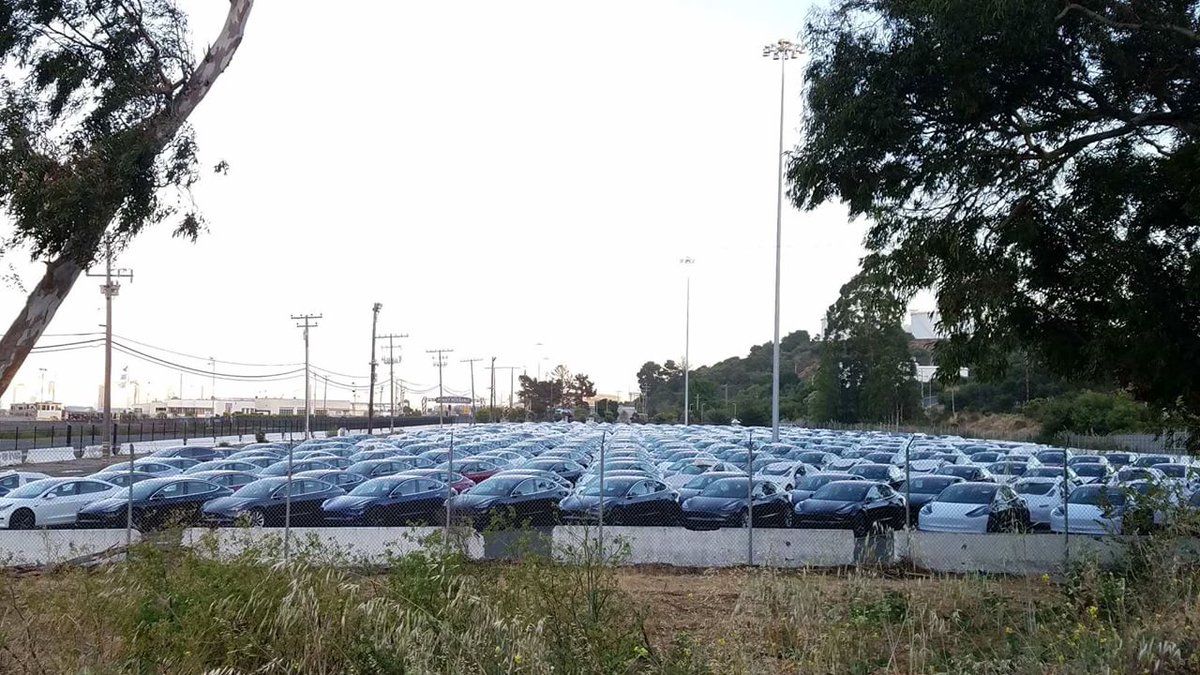
Viewed by the company’s critics, the lots filled with vehicles were proof that demand for the Model 3 was declining, and that the cars indicated that customers were opting out of deliveries due to poor quality. Latrilife, a Tesla critic, even announced on Twitter that Tesla’s Burbank Airport lot is under 24/7 surveillance. Goldman Sachs analyst David Tamberrino also published a note recently stating that Model 3 demand appears to be waning based on social media activity around the electric car.
According to Tesla on its recently held earnings call, however, interest in the Model 3 is alive and well. While responding to a question from Toni Sacconaghi of Bernstein, Tesla worldwide head of sales Robin Ren stated the company now sees more orders for the AWD dual motor and Performance variants combined compared to the Long Range RWD Model 3. Perhaps even more importantly, Tesla has also been seeing interest in the Model 3 coming from individuals who are not part of the electric car’s list of reservation holders.
“Since we opened the configurator to the general public in early July, we have seen an increased demand coming from people who do not currently hold a reservation. This is something that we found super exciting. These are the people who have no idea about Model 3 and they heard about Model 3 is available to order. Many of them requested test drives.
“Since early July, we have over 60,000 test drive requests in the US alone. These people come into our stores, do the test drive, and they become super excited, and they decide to order the car. We believe the strong demand, especially from non-reservation holders, will continue as we increase production.”
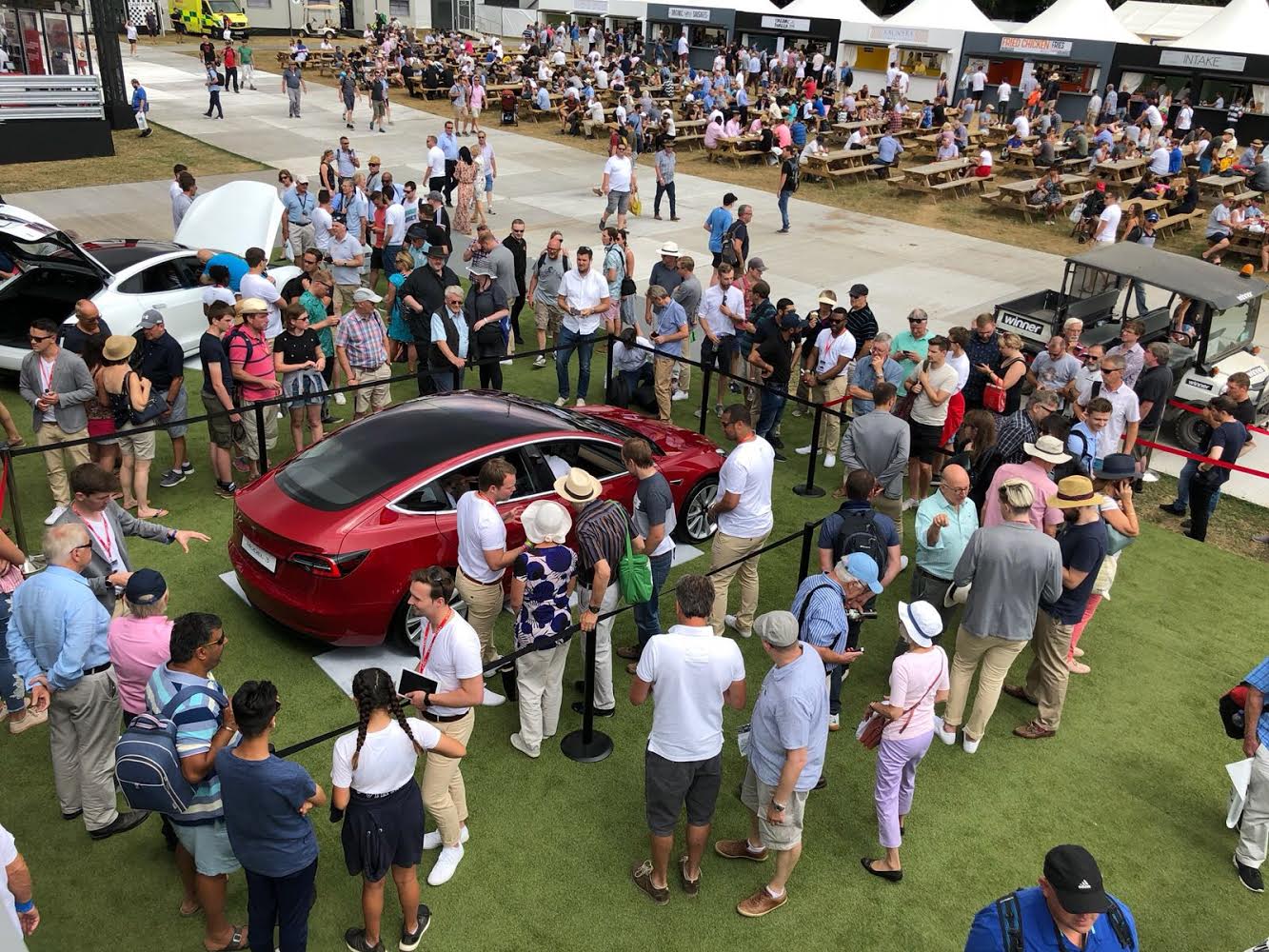
Tesla also noted that Model 3 customers have been trading in vehicles that are not in the electric car’s segment. The Model 3 competes in the midsize luxury sedan market, but the Top 5 vehicles the electric car’s customers have been trading in are the Toyota Prius, BMW 3 Series, Honda Accord, Honda Civic, and the Nissan Leaf. These vehicles, save for the BMW 3 Series, are not luxury sedans at all. Instead, they belong to a more affordable segment in the mainstream auto market. This means that as Tesla produces more of the electric car, even customers who drive more affordable vehicles are considering the purchase of a Model 3, a car that is more expensive.
Part of this could be due, of course, due to Tesla’s promised $35,000 Standard Range RWD version of the Model 3, which is expected to start production in 6-9 months. At its entry-level price, the Model 3 has the potential to take a big chunk of the midsize sedan market, possibly even taking on mainstays such as the Toyota Camry. Even without its base model, however, the electric car is still a compelling purchase, considering that it is one of the only vehicles on the road that is set to get better over time, thanks to Tesla’s trademark over-the-air updates. And that, for some customers, is worth the extra investment.
Elon Musk
Tesla analysts believe Musk and Trump feud will pass
Tesla CEO Elon Musk and U.S. President Donald Trump’s feud shall pass, several bulls say.

Tesla analysts are breaking down the current feud between CEO Elon Musk and U.S. President Donald Trump, as the two continue to disagree on the “Big Beautiful Bill” and its impact on the country’s national debt.
Musk, who headed the Department of Government Efficiency (DOGE) under the Trump Administration, left his post in May. Soon thereafter, he and President Trump entered a very public and verbal disagreement, where things turned sour. They reconciled to an extent, and things seemed to be in the past.
However, the second disagreement between the two started on Monday, as Musk continued to push back on the “Big Beautiful Bill” that the Trump administration is attempting to sign into law. It would, by Musk’s estimation, increase spending and reverse the work DOGE did to trim the deficit.
Every member of Congress who campaigned on reducing government spending and then immediately voted for the biggest debt increase in history should hang their head in shame!
And they will lose their primary next year if it is the last thing I do on this Earth.
— Elon Musk (@elonmusk) June 30, 2025
President Trump has hinted that DOGE could be “the monster” that “eats Elon,” threatening to end the subsidies that SpaceX and Tesla receive. Musk has not been opposed to ending government subsidies for companies, including his own, as long as they are all abolished.
How Tesla could benefit from the ‘Big Beautiful Bill’ that axes EV subsidies
Despite this contentious back-and-forth between the two, analysts are sharing their opinions now, and a few of the more bullish Tesla observers are convinced that this feud will pass, Trump and Musk will resolve their differences as they have before, and things will return to normal.
ARK Invest’s Cathie Wood said this morning that the feud between Musk and Trump is another example of “this too shall pass:”
BREAKING: CATHIE WOOD SAYS — ELON AND TRUMP FEUD “WILL PASS” 👀 $TSLA
She remains bullish ! pic.twitter.com/w5rW2gfCkx
— TheSonOfWalkley (@TheSonOfWalkley) July 1, 2025
Additionally, Wedbush’s Dan Ives, in a note to investors this morning, said that the situation “will settle:”
“We believe this situation will settle and at the end of the day Musk needs Trump and Trump needs Musk given the AI Arms Race going on between the US and China. The jabs between Musk and Trump will continue as the Budget rolls through Congress but Tesla investors want Musk to focus on driving Tesla and stop this political angle…which has turned into a life of its own in a roller coaster ride since the November elections.”
Tesla shares are down about 5 percent at 3:10 p.m. on the East Coast.
Elon Musk
Tesla investors will be shocked by Jim Cramer’s latest assessment
Jim Cramer is now speaking positively about Tesla, especially in terms of its Robotaxi performance and its perception as a company.

Tesla investors will be shocked by analyst Jim Cramer’s latest assessment of the company.
When it comes to Tesla analysts, many of them are consistent. The bulls usually stay the bulls, and the bears usually stay the bears. The notable analysts on each side are Dan Ives and Adam Jonas for the bulls, and Gordon Johnson for the bears.
Jim Cramer is one analyst who does not necessarily fit this mold. Cramer, who hosts CNBC’s Mad Money, has switched his opinion on Tesla stock (NASDAQ: TSLA) many times.
He has been bullish, like he was when he said the stock was a “sleeping giant” two years ago, and he has been bearish, like he was when he said there was “nothing magnificent” about the company just a few months ago.
Now, he is back to being a bull.
Cramer’s comments were related to two key points: how NVIDIA CEO Jensen Huang describes Tesla after working closely with the Company through their transactions, and how it is not a car company, as well as the recent launch of the Robotaxi fleet.
Jensen Huang’s Tesla Narrative
Cramer says that the narrative on quarterly and annual deliveries is overblown, and those who continue to worry about Tesla’s performance on that metric are misled.
“It’s not a car company,” he said.
He went on to say that people like Huang speak highly of Tesla, and that should be enough to deter any true skepticism:
“I believe what Musk says cause Musk is working with Jensen and Jensen’s telling me what’s happening on the other side is pretty amazing.”
Tesla self-driving development gets huge compliment from NVIDIA CEO
Robotaxi Launch
Many media outlets are being extremely negative regarding the early rollout of Tesla’s Robotaxi platform in Austin, Texas.
There have been a handful of small issues, but nothing significant. Cramer says that humans make mistakes in vehicles too, yet, when Tesla’s test phase of the Robotaxi does it, it’s front page news and needs to be magnified.
He said:
“Look, I mean, drivers make mistakes all the time. Why should we hold Tesla to a standard where there can be no mistakes?”
It’s refreshing to hear Cramer speak logically about the Robotaxi fleet, as Tesla has taken every measure to ensure there are no mishaps. There are safety monitors in the passenger seat, and the area of travel is limited, confined to a small number of people.
Tesla is still improving and hopes to remove teleoperators and safety monitors slowly, as CEO Elon Musk said more freedom could be granted within one or two months.
Investor's Corner
Tesla gets $475 price target from Benchmark amid initial Robotaxi rollout
Tesla’s limited rollout of its Robotaxi service in Austin is already catching the eye of Wall Street.

Venture capital firm Benchmark recently reiterated its “Buy” rating and raised its price target on Tesla stock (NASDAQ: TSLA) from $350 to $475 per share, citing the company’s initial Robotaxi service deployment as a sign of future growth potential.
Benchmark analyst Mickey Legg praised the Robotaxi service pilot’s “controlled and safety-first approach,” adding that it could help Tesla earn the trust of regulators and the general public.
Confidence in camera-based autonomy
Legg reiterated Benchmark’s belief in Tesla’s vision-only approach to autonomous driving. “We are a believer in Tesla’s camera-focused approach that is not only cost effective but also scalable,” he noted.
The analyst contrasted Tesla’s simple setup with the more expensive hardware stacks used by competitors like Waymo, which use various sophisticated sensors that hike up costs, as noted in an Investing.com report. Compared to Tesla’s Model Y Robotaxis, Waymo’s self-driving cars are significantly more expensive.
He also pointed to upcoming Texas regulations set to take effect in September, suggesting they could help create a regulatory framework favorable to autonomous services in other cities.
“New regulations for autonomous vehicles are set to go into place on Sept. 1 in TX that we believe will further help win trust and pave the way for expansion to additional cities,” the analyst wrote.
Tesla as a robotics powerhouse
Beyond robotaxis, Legg sees Tesla evolving beyond its roots as an electric vehicle maker. He noted that Tesla’s humanoid robot, Optimus, could be a long-term growth driver alongside new vehicle programs and other future initiatives.
“In our view, the company is undergoing an evolution from a trailblazing vehicle OEM to a high-tech automation and robotics company with unmatched domestic manufacturing scale,” he wrote.
Benchmark noted that Tesla stock had rebounded over 50% from its April lows, driven in part by easing tariff concerns and growing momentum around autonomy. With its initial Robotaxi rollout now underway, the firm has returned to its previous $475 per share target and reaffirmed TSLA as a Benchmark Top Pick for 2025.
-

 Elon Musk24 hours ago
Elon Musk24 hours agoTesla investors will be shocked by Jim Cramer’s latest assessment
-

 News6 days ago
News6 days agoTesla Robotaxi’s biggest challenge seems to be this one thing
-

 News2 weeks ago
News2 weeks agoTesla’s Grok integration will be more realistic with this cool feature
-

 Elon Musk2 weeks ago
Elon Musk2 weeks agoElon Musk slams Bloomberg’s shocking xAI cash burn claims
-

 News2 weeks ago
News2 weeks agoTesla China roars back with highest vehicle registrations this Q2 so far
-

 News2 weeks ago
News2 weeks agoTexas lawmakers urge Tesla to delay Austin robotaxi launch to September
-

 News2 weeks ago
News2 weeks agoTesla dominates Cars.com’s Made in America Index with clean sweep
-

 Elon Musk1 week ago
Elon Musk1 week agoFirst Look at Tesla’s Robotaxi App: features, design, and more








